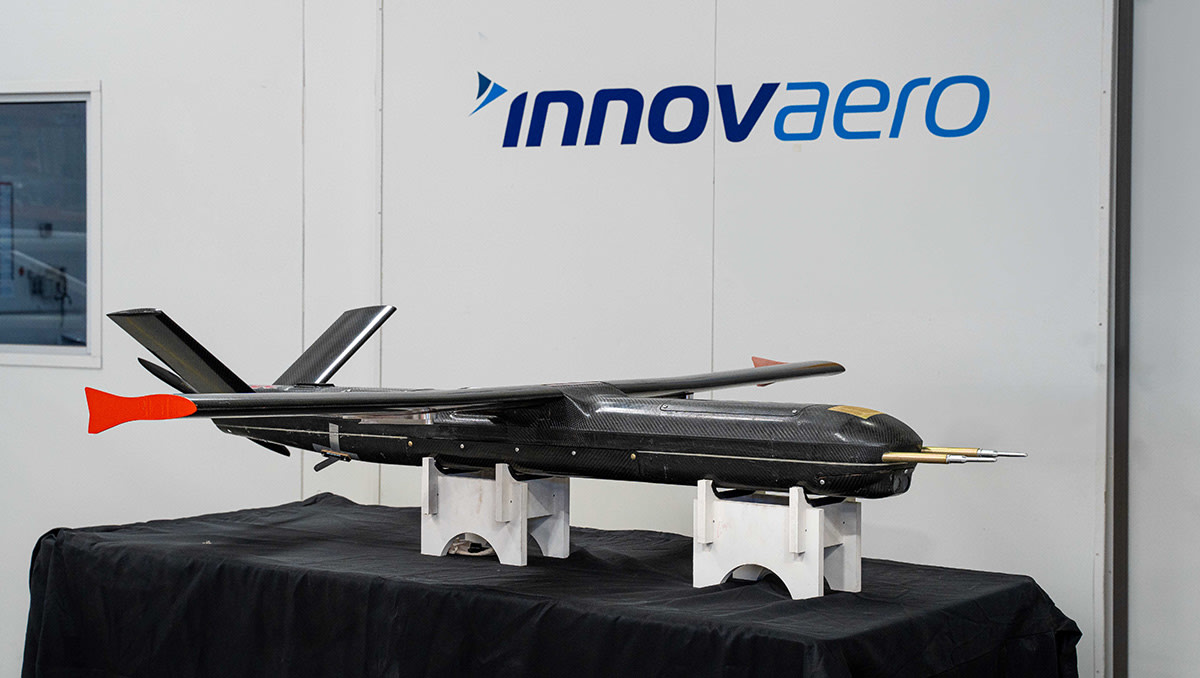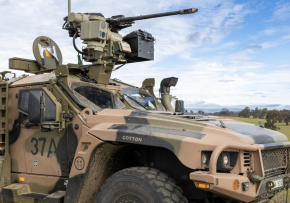TheBoomerangKid
New Member
The Australian Army has just released "Australian Army Contribution to the National Defence Strategy 2024". Lots of good information and insights into why and how Army is evolving.
It is available here: https://www.army.gov.au/our-work/st...y-contribution-national-defence-strategy-2024
It is available here: https://www.army.gov.au/our-work/st...y-contribution-national-defence-strategy-2024
Interesting article.The Australian Army has just released "Australian Army Contribution to the National Defence Strategy 2024". Lots of good information and insights into why and how Army is evolving.
It is available here: https://www.army.gov.au/our-work/st...y-contribution-national-defence-strategy-2024
It appears Army is very much on the Littoral train.
What's the driver for this rapid investment?
Cheers S
Has it been rapid? The defence review came out nearly 18 months ago but most ( not all) of the acquisition programs were in train well before its releaseInteresting article.
It appears Army is very much on the Littoral train.
What's the driver for this rapid investment?
Cheers S
Strategic direction from Government in the form of the DSR.Interesting article.
It appears Army is very much on the Littoral train.
What's the driver for this rapid investment?
Cheers S
TrueHas it been rapid? The defence review came out nearly 18 months ago but most ( not all) of the acquisition programs were in train well before its release
"most ( not all) of the acquisition programs were in train well before its release"
For myself the pace of acquisition of the medium / heavy landing craft is what intrigues me.
They are big and in numbers that dwarf what maritime lift capability we had in the past.
Add HMAS Choules and the LHD's and we are creating a maritime Army.
Just don't call them marines.
Don't call them naval infantry.
But do call them capable of operating in the Littoral realm.
It wont happen over night and it will evolve.
How this capability is reflected in he Brigade / battalion structure will be interesting.
The new track and wheel acquisition" things" will very be very much integrated with the enhanced landing craft capability.
The Littorial train has left the station
Interesting times
Cheers S
The infantry is what interests me atm.
The battalion may just be an admin organisation, I can see the rifle companies evolving into something more like independent rifle companies, except for maybe the single mechanised brigade group.
This might not be a bad idea.
Go back to section level training, with a slant on counter insurgency. The infantry section of the 90s was a tight group, Platoon training becomes easy, and company group also becomes easy.
With the himars island hopping in a denial strategy, they will need protection. I guess the idea of denial would mean steering, or channeling an enemy force into a better kill zone.
The battalion may just be an admin organisation, I can see the rifle companies evolving into something more like independent rifle companies, except for maybe the single mechanised brigade group.
This might not be a bad idea.
Go back to section level training, with a slant on counter insurgency. The infantry section of the 90s was a tight group, Platoon training becomes easy, and company group also becomes easy.
With the himars island hopping in a denial strategy, they will need protection. I guess the idea of denial would mean steering, or channeling an enemy force into a better kill zone.
What does Army look like going forwardThe infantry is what interests me atm.
The battalion may just be an admin organisation, I can see the rifle companies evolving into something more like independent rifle companies, except for maybe the single mechanised brigade group.
This might not be a bad idea.
Go back to section level training, with a slant on counter insurgency. The infantry section of the 90s was a tight group, Platoon training becomes easy, and company group also becomes easy.
With the himars island hopping in a denial strategy, they will need protection. I guess the idea of denial would mean steering, or channeling an enemy force into a better kill zone.
Have we got the same number of Coys/Sqns as the Beersheba / Keogh days and redistributed them into three speciased Brigades.
I think not.
Suggest its a total revamp.
Infantry of all types will be in different quantities and structures.
Little in the public domain so lots of speculation.
Do each of the surviving RAR's know what they will become and what they will look like.
Suggest they do.
Must be hush, hush, secret stuff!
Cheers S
The context for Australia is that the threat is very powerful, is its largest trading partner, and is closely connected in economic terms to every country in its region. That is further complicated by the fact that the China’s primary military objective (Taiwan) is tangentially related to Australia (at least from the point of view of the majority of the Australian public) and by some domestic political factors that apply in Australia but less so in (say) the US or Japan. A Japanese minister or a US general can talk openly about preparing for war with China. That language would be career ending in Australia.What does Army look like going forward
…
Little in the public domain so lots of speculation.
…
Must be hush, hush, secret stuff!
Cheers S
Given all that very little of the threat analysis is put to the public domain in clear terms (except from some unhinged sabre rattling in a certain newspaper and the occasional opinion piece in ASPI).
My speculation is that the threat that the Australian Army needs to respond to is the formation of security agreements between China and nations in Australia’s northern approaches. If those security agreements allow prepositioned force protection for the security forces (if you think of the force protection elements that INTERFET brought to East Timor and then add shore based missiles then you get the picture) then that force protection would need to be neutralised in a major conflict.
Currently the threat of unfavourable security agreements has reduced (diplomacy and good luck) but that could all change (e.g., due to US and Australian political events that are out of scope of the thread).
Littoral lift is therefore about getting Army to the northern approaches for operations other than war, for prepositioning in advance of a conflict, and for reconnecting when it is safe to go to sea, rather than for amphibious assault (if it is intended for amphibious assault the ADF has an inadequate force structure to protect it).
MARKMILES77
Well-Known Member
Australian Government is accelerating the development of an Australian designed and manufactured Loitering Munition, The Owl B for the Australian Army.
Made by Australian company Innovaero.

 www.defenceconnect.com.au
www.defenceconnect.com.au

Made by Australian company Innovaero.

Commonwealth to continue investment in Australian-first loitering munition
Perth-based SME Innovaero has confirmed the Commonwealth’s acceleration of development of Australia’s first sovereign precision loitering munition capability.

Hi Gents,Sadly i think that involved one of the NCO's I worked with at 6RAR - Cpl Mal Rutherford. Top bloke and an excellent JNCO. We left our Butterworth rotation when I was at 6 in Jan '90 iirc. We had 2 of the Hino 4x4 trucks used as troop carriers go into ditches evading the dodgy malay drivers thankfully with no injuries or significant damage in the 3 months we were there. It would have occurred the next time 6RAR did the Butterworth rotation I'd guess 91-92? Can't find dates - anyone got better google-fu?
I am new to the forum and chanced upon this post, albeit a few years old now….
I was with A Coy 6RAR in Malaysia in 92, and we too had a vehicle accident. We rolled over in our centre seating Hino? And were thrown all over the place. When we came to rest, I was trapped by my left arm under the truck. The boys got me out, and thankfully no one was killed. We were lucky as we had 84’s and 66’s as well as pop up sneaker target mechanisms in the truck too.
I wrote a submission to the royal Commission into defence and vereren suicide as the adf should have known it was a matter of time before a fatality in that area. Unfortunately 5 x blokes from 5/7? were killed there the following year!
Anyway just wanted to clarify this if you guys are still interested.
Cheers Toffs
I went to RCB in 92 as well, B Coy 3RAR, we might have relieved you, pretty sure we took over from 6RAR.
Thanks Old Faithful,I went to RCB in 92 as well, B Coy 3RAR, we might have relieved you, pretty sure we took over from 6RAR.
Yeah I’m pretty sure you guys from 3RAR did take over from us. Surprised nothing was mentioned at the time? No social media back then though! Thanks for answering my post too mate
There was a lot to take on board in the first few days, as which bars we were not allowed to go to, Dr Dan's lecture, haircuts from slow poke and intro to Spider etc lol.Thanks Old Faithful,
Yeah I’m pretty sure you guys from 3RAR did take over from us. Surprised nothing was mentioned at the time? No social media back then though! Thanks for answering my post too mate
MARKMILES77
Well-Known Member
Well that question is answered!First time that I have seen a Hawkei with an EOS Remote Weapon Station issued to an Army Unit.
10th Light Horse regiment were operating them during Excercise Austral Shield 2024.
They were equipped with 7.62 weapons.
Would be interesting to know whether the Hawkei can handle the RWS equipped with a 30mm X 113 gun?

Defence Imagery: 20240720adf8500704_0042.jpg
images.defence.gov.au
View attachment 51541View attachment 51542
Hawkei with 30mm EOS Remote Weapon Station at Puckapanyul.

1st Armoured Regiment - Australian Army | Adelaide SA
1st Armoured Regiment - Australian Army, Edinburgh. 24,275 likes · 334 talking about this · 73 were here. This is the official page of the Australian Army's 1st Armoured Regiment.
 www.facebook.com
www.facebook.com

IIRC the AS9 has "additional protection" which would match to the extra armour panels shown. Also slightly taller, which this might be, as best i can tell. So... yeah?Reportedly, the AS9 Huntsman, spotted in S. Korea. Original photos by mason_8718 on X. (x.com)
Would look great in auscam, certainly.
OldTex
Well-Known Member
I wonder if the M230LF dual feed chain gun will be introduced into the Australian Army to provide both a ground engagement and UAV engagement capacity. It would seem to provide a means to implement C-UAS protection without adding additional systems or equipment. With the change to littoral manoeuvre having multi-purpose equipment will become more important.Well that question is answered!
Hawkei with 30mm EOS Remote Weapon Station at Puckapanyul.
View attachment 51799
1st Armoured Regiment - Australian Army | Adelaide SA
1st Armoured Regiment - Australian Army, Edinburgh. 24,275 likes · 334 talking about this · 73 were here. This is the official page of the Australian Army's 1st Armoured Regiment.www.facebook.com
Interesting questionI wonder if the M230LF dual feed chain gun will be introduced into the Australian Army to provide both a ground engagement and UAV engagement capacity. It would seem to provide a means to implement C-UAS protection without adding additional systems or equipment. With the change to littoral manoeuvre having multi-purpose equipment will become more important.
A kinetic response for C-UAS will be mandatory going forward
is this the solution ?
Logistics will be interesting
If correct I think the Boxer and Redback each have a different 30mm gun so do we need another 30 mm round.
As a light weight system it does have appeal
thoughts
Cheers S


